Can You Apply Oil Based Paint Over Latex Paint?
Learn what can happen if you apply oil-based paint over latex paint, and vice versa
When doing any home painting project (for instance, painting walls, trims, window frames, etc), people often face the same issue: is it possible to apply one type of paint over another?
For example, one of the most frequently asked questions is how to paint latex over oil-based paint, and vice versa.
It is a reasonable concern in fact, since these two types of paint are different and so you might feel uncertain of whether or not they get along well together if applied onto the same surface.
So in this article, we are going to tell you more about this issue. You will learn whether it is possible to apply oil based paint over latex paint, and vice versa.
In addition, we will provide you with the detailed instruction on what steps to take in order to undergo this painting process correctly and with the best effect.
Finally, you are going to learn when oil based paints are best to be used, and what advantages this type of paint has.
Can You Put Oil Paint Over Latex Based Paint?
Well, if you happen to face this issue, and you realize that you might need to paint old oil based paint with the coat of new latex paint, we need to tell you at once that this is not the best decision.
See, these two types of paint are rather distinct by their nature, texture and structure. Latex paint is very flexible in nature.
If you apply oil based paint layer over it, oily paint will simply not be able to adhere to the latex surface properly.
However, it does not mean that oil based paints cannot be used over latex! It is possible, but you need to keep in mind that certain preparations will be needed.
For example, if you sand the surface first and apply a sealing coat (such as primer) between the different layers of paint, you can succeed with applying oil-based paint over latex. As you can see, preparation is key.
This is why we recommend you check out how to apply oil based paint over latex based paint correctly.
Below, you will find a detailed instructions with the step by step description of the process.
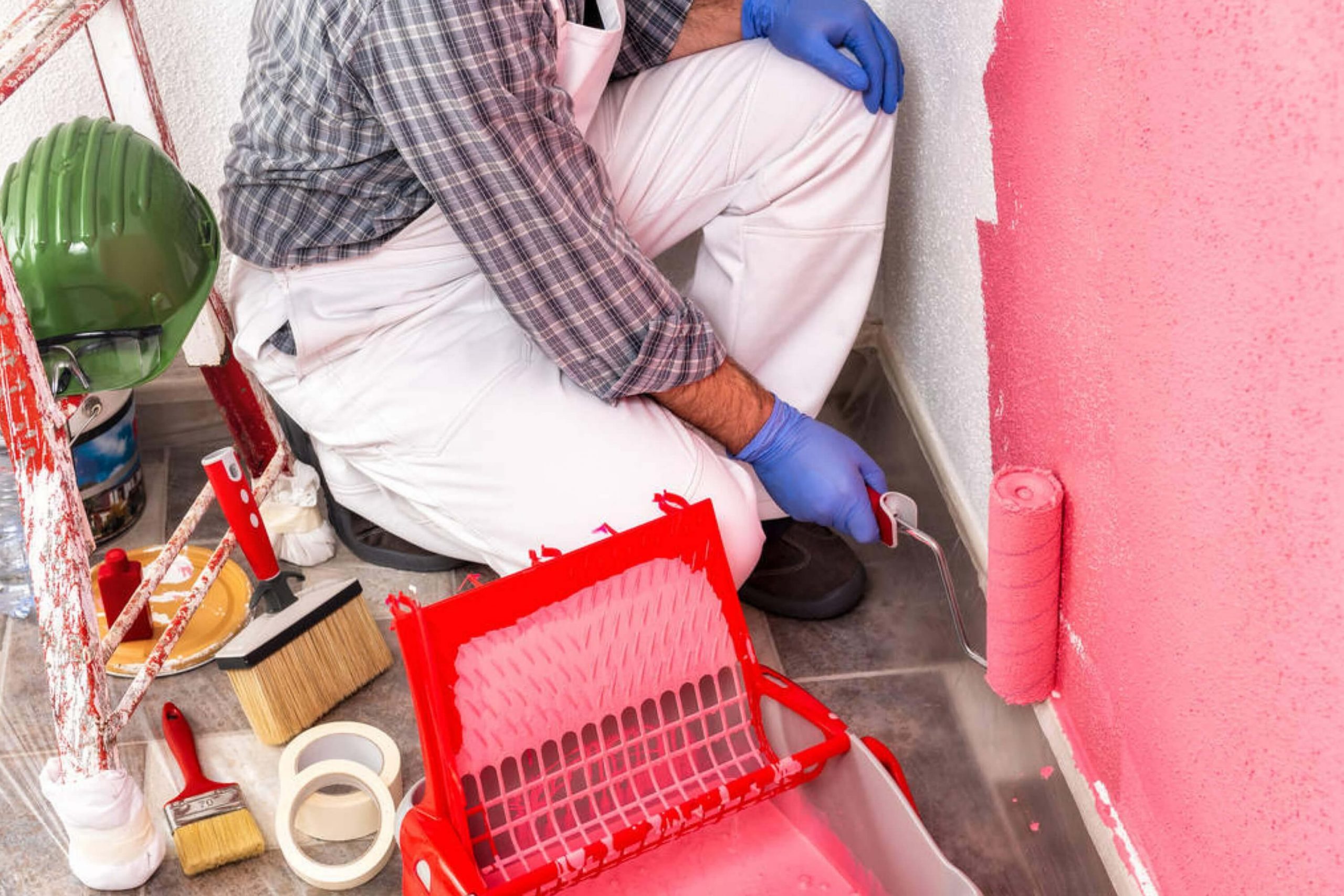
francescomoufotografo via crello
Table of Contents
Start With Sanding the Surface
This is the mandatory step that must never be skipped! As we have previously mentioned, latex paint is rather flexible in nature.
As a result, when applying the two distinct paints one over another, chances are high that oil-based paint will not be able to properly adhere to latex.
Well, unless you sand the surface and add primer between each of the layers.
This is why you should start by equipping yourself with a piece of P80 grit sandpaper. With its help, do your best to remove as much of the latex from the surface as possible.
You can also use a sanding block if this method is more preferable for you. By removing the latex from the surface, you will help the oil-based paint to adhere much better than if the latex was left on.
Make sure you sand the surface down until you get a real matte look.
Now a Bit More Sanding
If you think that you are done with sanding, we are here to tell you that it’s not the end yet!
You will now want to make use of 150 grit sandpaper instead of the 80 grit one, and sand your surface until you get it extremely smooth.
After the surface has been completely sanded, wipe away the dust left behind with a damp towel or a clean cloth and let the surface to completely dry.

22rus83 via crello
Related: DIY Wood Furniture Refinishing: What You Need to Know?
Apply the Masking Tape Over the Area
You surely don’t want to have all the things around you get accidentally painted! So use a quality masking tape to mask anything where paint splatters might end up by accident.
This can include things like the edges of adjoining walls, the edges of your cabinets, the edges of a light switch, and so on.
With the help of a masking tape, you will be able to get that exceptionally clean, sharp look when you are done with painting and everything is fully dried.
Time to Apply the Primer
After you sanded the surface and after the masking tape is applied, it’s time to proceed and apply the primer. At this point, you can choose between a water-based primer or an acrylic primer.
Each of these primers work well, but also, each has its particular pros and cons. Both water-based and acrylic primers create the perfect isolating surface.
After you have applied the primer, and it is fully dried, the next step is to go ahead and apply a second coat.
It is important to make sure that you cover every single piece of latex possible!
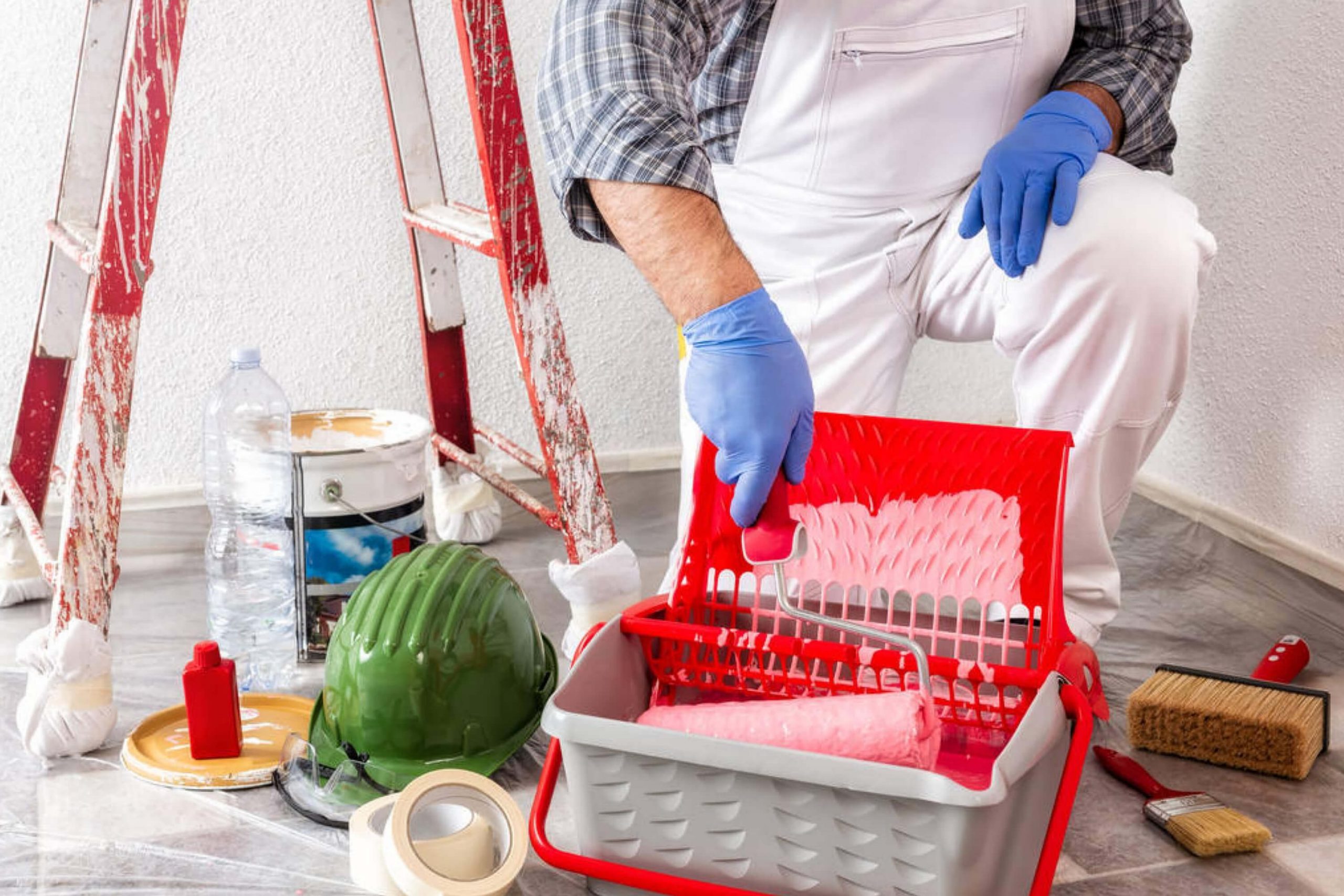
francescomoufotografo via crello
Related: How Long To Wait For Primer to Dry?
Apply the Top Coat
After you successfully undergo all the steps described above, it is time to apply the top coat finally. To do this, make sure that you have a container of oil-based top coat at your disposal prepared in advance.
This can be purchased at most home improvement stores, so you won’t have any complications.
After you have applied this solution, give it enough time to fully dry, and if needed, apply another coat to get the high-quality coverage.

AllaSerebrina via crello
Remove the Masking Tape
Finally, it is time to get the masking tape off! Note that it is best to remove all the masking tape before the paint fully dries! If you removing it after the paint has fully dried, it can cause the paint to tear, break, or chip!
This is the complete description of the process of oil-based paint application over the coat of latex paint.
As you can see, there is nothing difficult about it. You just need to make sure that you get ready in advance and follow all the recommendations precisely.
Related: How to Remove Command Strips Without Damaging Paint?
Extra Tips Regarding Putting Oil-Based Paint Over Latex Coat
We have explained in detail how you should paint oil-based paint over latex, but here we would like to share several other tips with you on how to put oil-based paint over latex:
- Remove the unwanted oil-paint splatter immediately with brush cleaner
- Ensure that you paint in a ventilated area to diffuse the fumes and allow the paint to dry
- Use a mask when painting, since the paint fumes are not good for your health
- Clean oil-paint from brushes with a brush cleaner
- Latex can be easily cleaned with water
- Wear a dust mask to isolate yourself from paint particles when sanding
Like this, you will be fully protected and the paint will be applied correctly.

ViktoriaSapata via crello
Can You Paint Latex Paint Over Oil Based Paint?
All righ, some of you may say now, we have learned how to apply oil paint over latex. But how to paint over oil based paint with latex? Will this process differ somehow? In fact, yes, this can also be done, and quite successfully, if you make sure that you have prepared for the upcoming painting procedure correctly.
Also, there is one thing that you have to remember. See, once you apply latex paint over an oil-based paint layer, the only way to remove it (in case you need that) is to sand it off.
That can become quite a bothersome and annoying task, this is why we recommend you make sure ythat ou get it right from the very start.
As for the paint application itself, basically, painting latex paint over oil based paint is the same as the reverse procedure. You just need to ensure that you follow all the instructions so that your freshly applied latex paint over oil-based paint layer won’t start peeling.
If you do decide to use latex layer over an oil-based paint, you will also want to make sure you sand out any glossy areas of the surface first of all. This is the very first and the very basic thing that should be done!
Also, remember to make sure you use 100% acrylic latex paint.
It is also important to note that the more you sand the surface, the better the acrylic paint will stick to it.
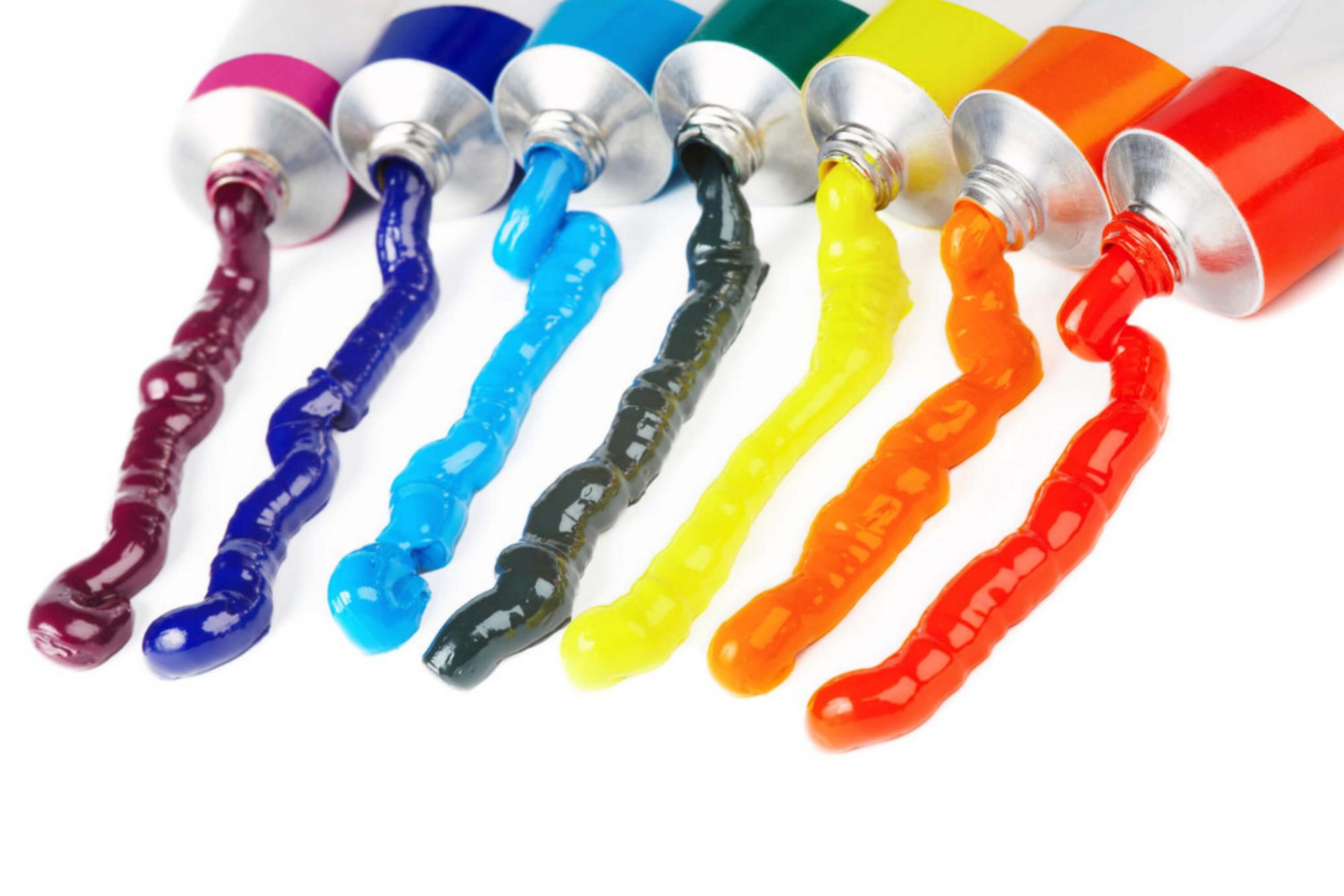
muha04 via crello
In order to successfully paint latex over oil-based paint, follow the next recommendations precisely:
Sand the Surface
The surface you are going to paint must be fully sanded with a 150 grit paper.
Also, make sure you don’t see any sort of shine on it. What you should see is more of a matte surface.
Mask the Surrounding Area
To get sharp and clean-cut edges, use quality masking tape.
Remove the tape when you are done painting and the paint is still moist.
If you remove the masking tape when the paint has fully dried, it can lead to your paint chipping, rip, or even break the paint off!

NastyaBerezen via crello
Apply Latex Conversion Primer Paint
Once the surface is fully sanded, it is time to apply a layer of latex conversion primer paint.
When doing it, make sure that you give it enough time to dry. And also, it is essential that you cover all the areas of the surface that is being painted!
Apply Your Oil-Based Paint
Lastly, apply your oil-based paint and let it dry. When the latex ‘conversion’ primer and your oil-based paint mix, they allow your oil-based paint to adhere with no issues.
Now that you know exactly how to apply oil based paint over the layer of latex paint and vice versa, you will be able to achieve the smooth and evenly painted surface no matter what it is that you need to paint.
When Should I Use Oil-Based Paints?
There are two types of paint available on the market today. One is oil-based paint, and another one is acrylic latex paint that is made of water and an acrylic resin binder.
Deciding what type of paint to use, and what painting projects it should be used for is what may confuse you.
Most painters, however, prefer using oil-based or latex paint when they need to update the surface and paint over the interior of homes.
Both paints, however, are suitable for different objects, surfaces, etc.
For example, latex paint most commonly covers interior walls, while oil-based paint is more fit on objects with surfaces that tend to wear & tear.

miromiro via crello
Related: How to Make Oil Paint Dry Faster?
What Advantages Does Oil-Based Paint Have?
This is the question that you surely ask sooner or later since this type of paint is rather popular for various interior paint works and projects.
And you will probably be surprised to find out how many of benefits this paint has!
Oil-based paint dries with a hard veneer that is impervious to scratches, fingerprints, and recoloring, unlike latex-based paint.
- Oil-based paint dries much more slowly, this is why it results in a smoother and glossier finishing.
- Oil paint is easier to wash off when making a mistake.
- Unlike latex, oil paints are stronger in terms of confronting washing cleansers.
- all flaws are easier to hide with oil paints since they are much thicker.
- The surface provided by oil-based paints is smoother to the touch.
- Oil-paint is better since it is more visually pleasing, smoother, and firmer.
Finally, there is another great advantage. See, oil-based paint offers a less clear refractive file unlike latex paint. This happens because the linseed oil contains smaller particles than latex paint does. This is why the coat of oil paint gives a more profund and warm feeling than latex paint.
Even though it may require extra work, using and applying oil-based paint is possible in almost any situation. Here you can check out the projects which this paint can be very fitting for:
- doors
- cabinets
- full-gloss finish surfaces
- trims
- rooms with high levels of moisture, like the bathroom
When using a faux finish, you can easily manipulate and play with it however you may like, due to the extended drying period of oil-based paints.

AllaSerebrina via crello
With all this information, tips and recommendations in mind, you will now be able to use and apply oil and latex-based paints correctly ensuring that you get a smooth and nicely looking coat of paint no matter where it is applied to.
Ever wished paint sampling was as easy as sticking a sticker? Guess what? Now it is! Discover Samplize's unique Peel & Stick samples. Get started now and say goodbye to the old messy way!
Get paint samples




Frequently Asked Questions
⭐Can you paint latex paint over oil based paint without primer?
It’s not recommended since in this case, the paint might not attach properly and later, it will start peeling off.
⭐Can latex paint be mixed with oil paint?
No, it can’t if you ask about mixing them both in one container. However, these paints can be applied on top of each other successfully.
⭐Is latex paint thicker than oil-based one?
No, oil-based paint is thicker than latex paint. This is why latex paint is easier to use and apply than oil paint.
12 thoughts on “Can You Apply Oil Based Paint Over Latex Paint?”
Leave a Reply

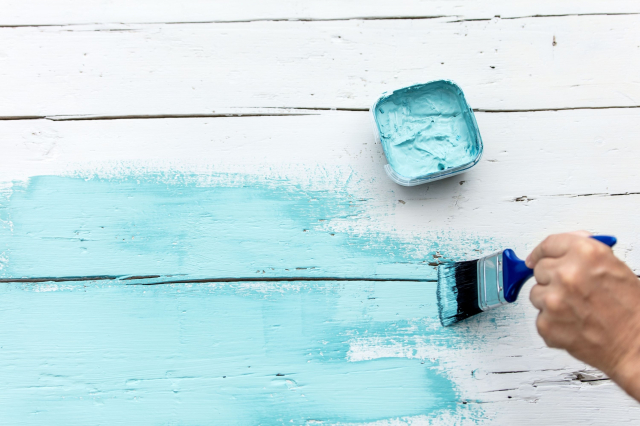
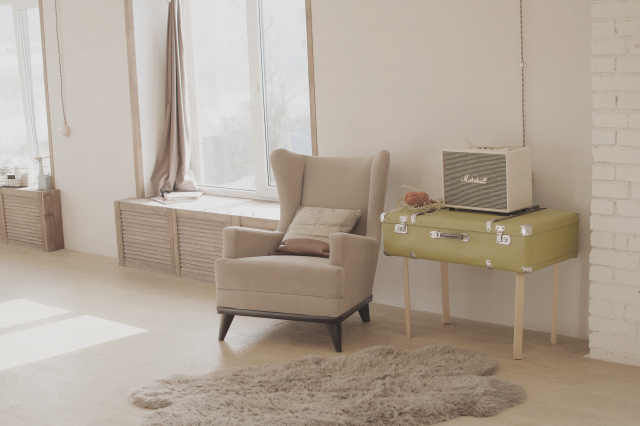
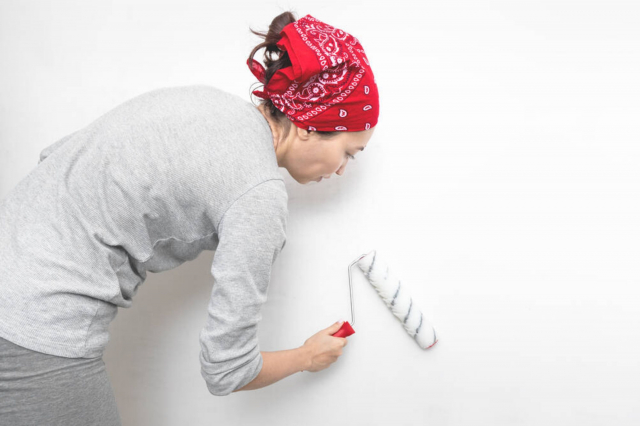




Thank you for so much useful information regarding paints. There’s only one qestion that I have. Can you paint enamel over latex?
Hi! We’re glad to help you! Regarding your question, you can use enamel paint to paint over latex paint but it is generally recommended to prepare the surface by applying a primer first.
Hello! Could you please help me to figure out one thing? Can you paint oil over acrylic house paint, and vice versa?
Yes, you can paint oil over acrylic, but not acrylic over oil! Acrylic gesso provides excellent adhesion for oil paint. Speaking of acrylic primed canvases, they can be more absorbent than oil primed canvases. Just make sure the surface has enough texture for oil paint to adhere properly.
Can you paint oil over latex or latex over oil? What combination is more correct?
You should never apply oil paints over latex! The only exception when this will work is if you are using a waterborne alkyd which will safely coat the more flexible layer beneath.
Hi! Are there painters here, guys? I need your help! Can you put oil-based paint over latex primer? Will this paint adhere well to such a surface?
Hi! I’m not a painter but I can answer you. Yes, you can use oil-based primer over latex. You just need to make sure that the surface is prepared correctly. Then oil-based primer will adhere to latex without an issue.
Is it possible to make my latex paint thicker somehow? I need to do it right now so I have no time to drive to the store to buy any chemical thickeners, or something! Thanks for any ideas!
Try cornstarch or flour. Salt or sugar might also be handy in case you don’t have cornstarch, for example. I know that some people even use sand or sawdust!
Hi! Listen folks, does anyone know whether latex paint is supposed to be thick? I have a can of latex paint that’s been on a shelf for quite a while. I opened it yesterday to refresh my garden table, but the paint seems to look much thicker than it should be…Is it possible that it decayed?
Well, maybe it got thicker because of extended storage indeed. But I don’t think it’s old or decayed. Try to add some water (a little bit) and stir it thoroughly. It may help, I assume.